Manaslu, the 8th highest mountain in the world, stands at an 8163 meters above sea level. It is one of the few mountains that lies entirely in Nepal, specifically in the Gorkha district of northern Nepal. Unlike many of Nepal’s other mountains that shares border with China, Manaslu is purely a Nepalese treasure.
Manaslu was first summited on May 9, 1956 by Japanese climber Toshio Imanishi and Nepali climber Gyaltsen Norbu. Manaslu winter ascent was first summitted on January 12, 1984 by Polish climbers Maciej Berbeka and Ryszard Gajewski.
Today, most expeditions opt for the NE face route which is considered less technical. The accessibility of this route has made Manaslu one of the more approachable 8000m peaks.
This is my story of Manaslu winter ascent; a journey of experience, learning, coping and adapting.
The Idea
The idea of Manaslu winter ascent first sparked in my mind after I summited the mountain for the first time in 2017. I found the slopes in Manaslu to be relatively easy and I saw a potential for a ski descent. The idea further took shape after meeting with the famed Nirmal Purja aka NimsDai. It was in early 2021, and I had just returned from an expedition when I encountered him in Namche. He shared his plan to summit K2 in winter and asked me to join him. Although excited, I hesitated- K2 is notoriously the most challenging of the 8000 meter peaks, even in favorable conditions. There’s a reason why K2 remained unclimbed in winter until 2021, while many other 8000ers had been conquered in winter by the 1980s.
There was another thing going in my head. I had guided an expedition to Manaslu in 2017. The routes and geography were fresh in my mind and was sure Manaslu would be a more achievable goal for my first winter ascent. So, I took a shot and asked Nims Dai to sponsor my winter Manaslu ascent project. He agreed. I was about to embark on my first ever winter 8000 meter ascent.
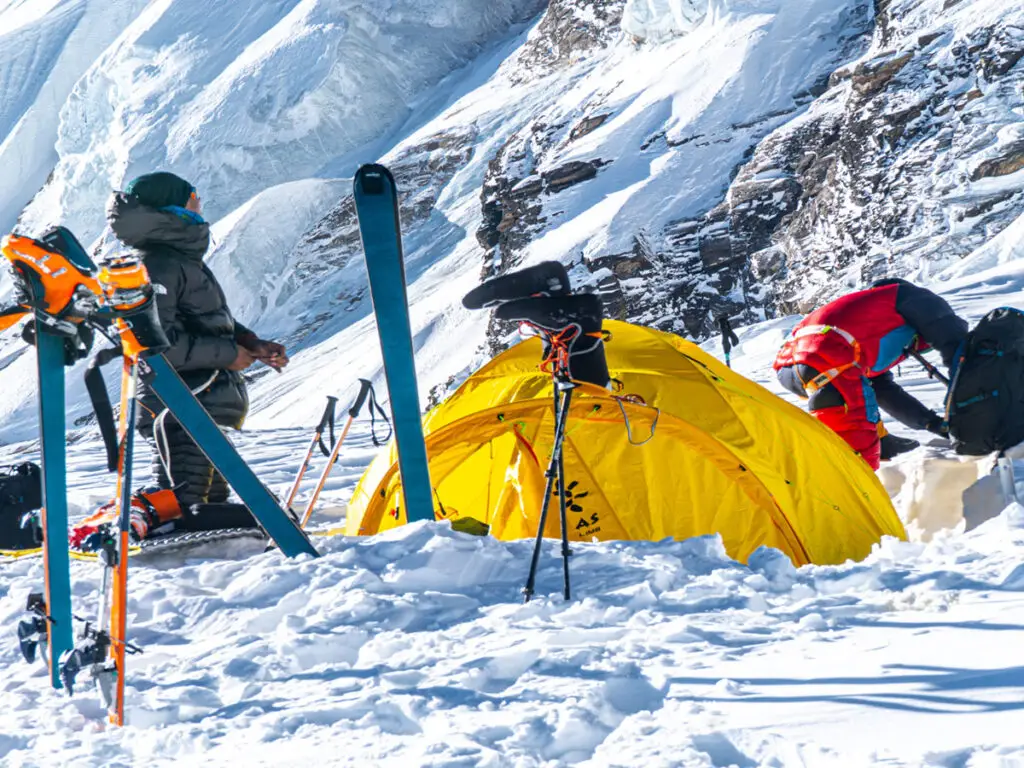
Planning and Preparation
Expedition planning is a science in itself. There are many components to consider. From managing logistics, food supplies, to technical gears, equipment, climbing partner, securing finances, and route assessment, expedition planning is climbing a mountain in theory. It is the blueprint of the undertaking.
One giant boulder was removed as our project was sponsored by Nims Dai, which ensured fewer financial worries. Even better, Elite Exped (Nims Dai’s company) provided tents and climbing gears. Now a challenge was finding a climbing partner who was both physically strong and mentally prepared to summit an 8000er in winter.
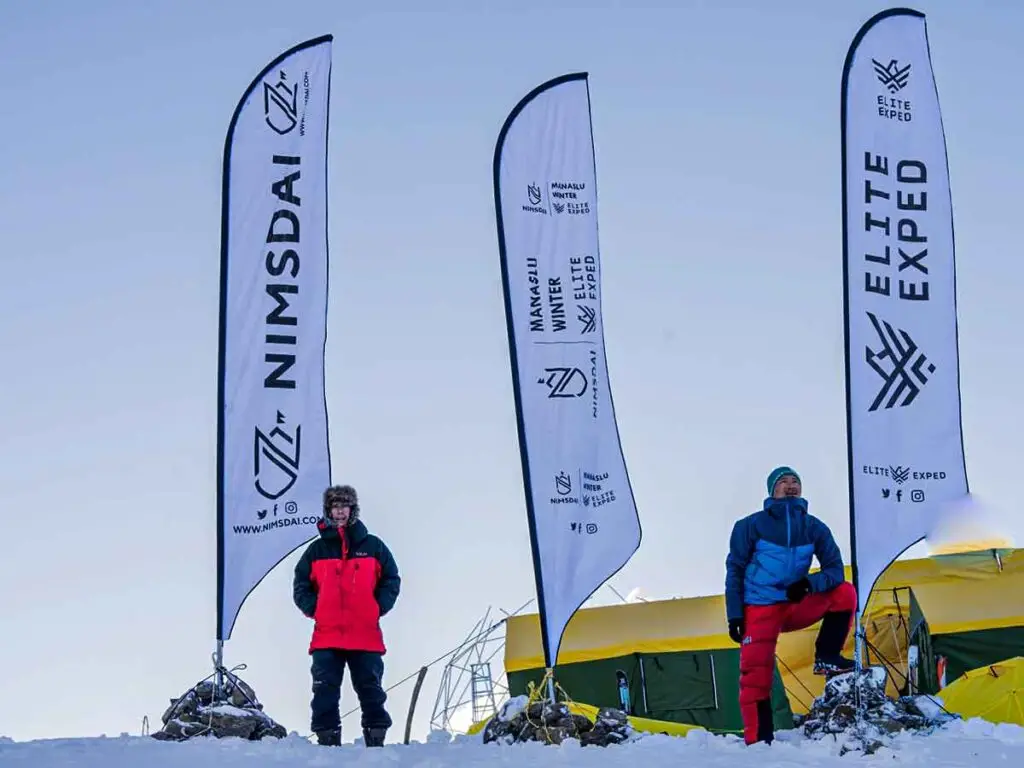
I had previously worked with Tenji, also an IFMGA guide. He is a courageous fellow with impressive feats in mountaineering. After discussing my plan with him, Tenji graciously accepted to join the project. With finances, gears and logistics sorted, we were now a team of two. We spent countless hours carefully considering our route, planning our camps & assessing possible hazards.
Tenji and I had planned to attempt Manaslu in winter in alpine style, without bottled oxygen and with Skis, to make ski descent!
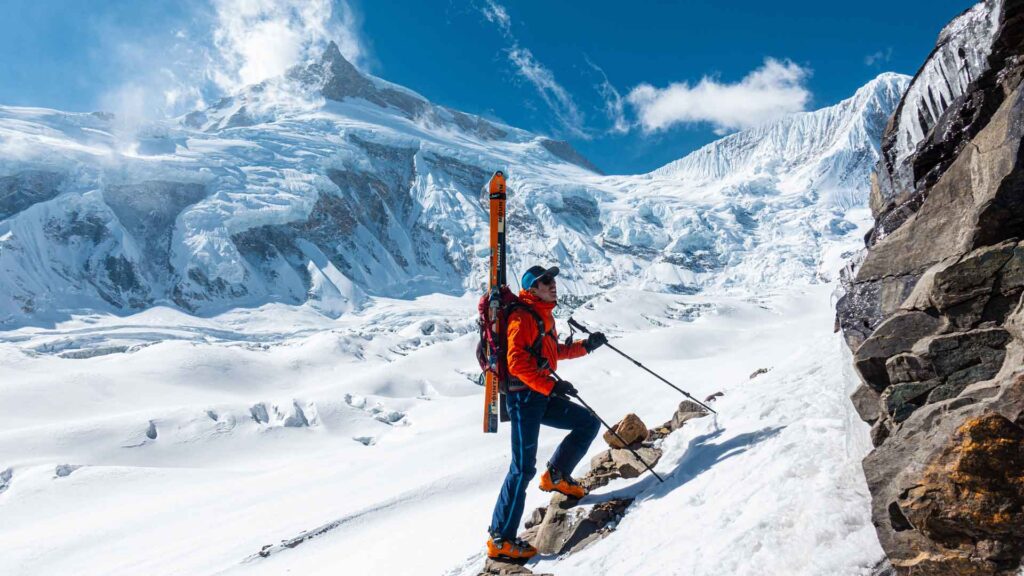
The Climb
We left Kathmandu in the end of December. The standard caravan route follows,
Kathmandu-Samagaon-
We started off on a positive note. The weather turned horrific when we reached Samagaon. We were unable to move for 10 days. The conditions were not looking promising. One thing was our permit, which was already acquired late. The Department of Tourism (DoT) issues permit of mountains above 6500 meters. Winter ascents in Nepal is permitted from December 1.
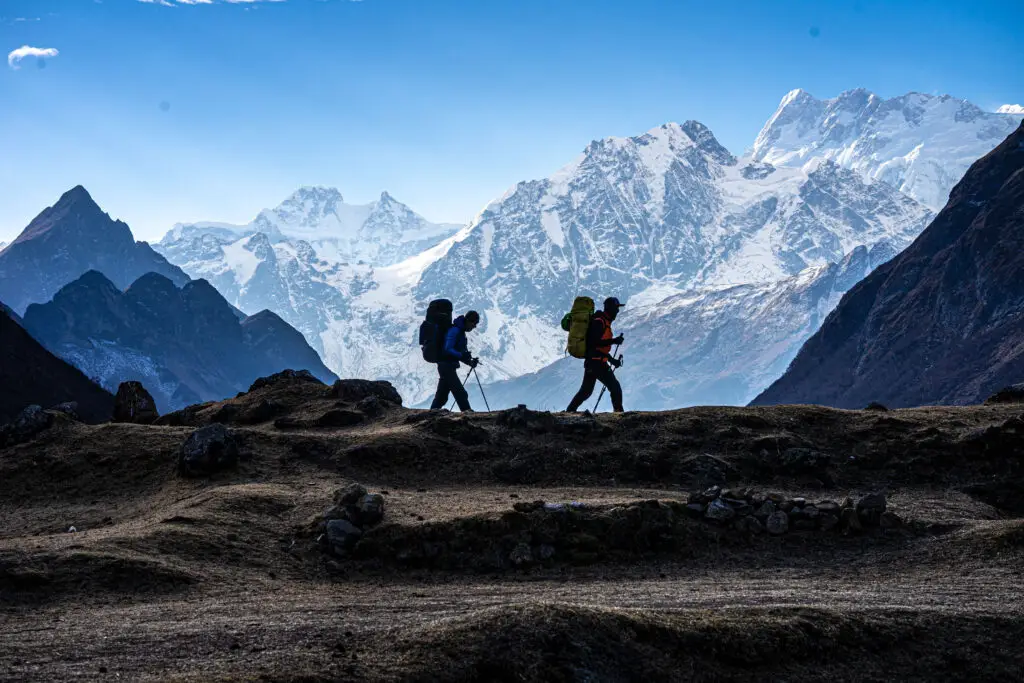
In my personal findings, the snow conditions and weather of Manaslu is relatively stable and climbable till the 1st of January. This suggests than an expedition starting early in December has a better chance of reaching the summit with less difficulty. We were falling behind the calendar. Snow and weather conditions start deteriorating horribly after January first week.
We reached basecamp and prepared to make our move the following day. There were other climbers attempting Manaslu in winter. Simone Moro and Alex Txicon were at Manaslu again. Simone Moro is a veteran alpinist from Italy. He has attempted Manaslu 4th time now but no success. There was a misunderstanding within the media that were accompanying us as their guides. We were not.
Due to the high winds expected in the mountains over the next few days, we decided stay at the base camp. We were acclimatized and in good health. While we enjoyed beautiful days and breathtaking sunrises, these were tempered by the bitter cold brought of the winter winds, which only grow as altitude is gained. We only needed three days of good weather, so our hope was for a clear window to push forward.
For five weeks, we gave it our all. We were emotionally and physically prepared, but never compromised our safety. On our way to Camp 2, we encountered an impassable crevasse. We had to alter the route, but the snow conditions, and the upcoming bad weather made it unfeasible to continue. We manage to reach 6400m, but Manaslu was showing her wrath. The weather became as harsh as it could, with piercing winds and freezing cold temperatures. Snowfalls were nonstop and to a climber’s horror, sugary and deep. Every step you take forward, you are pushed back by two. Now that is winter pursuit of mountaineering.
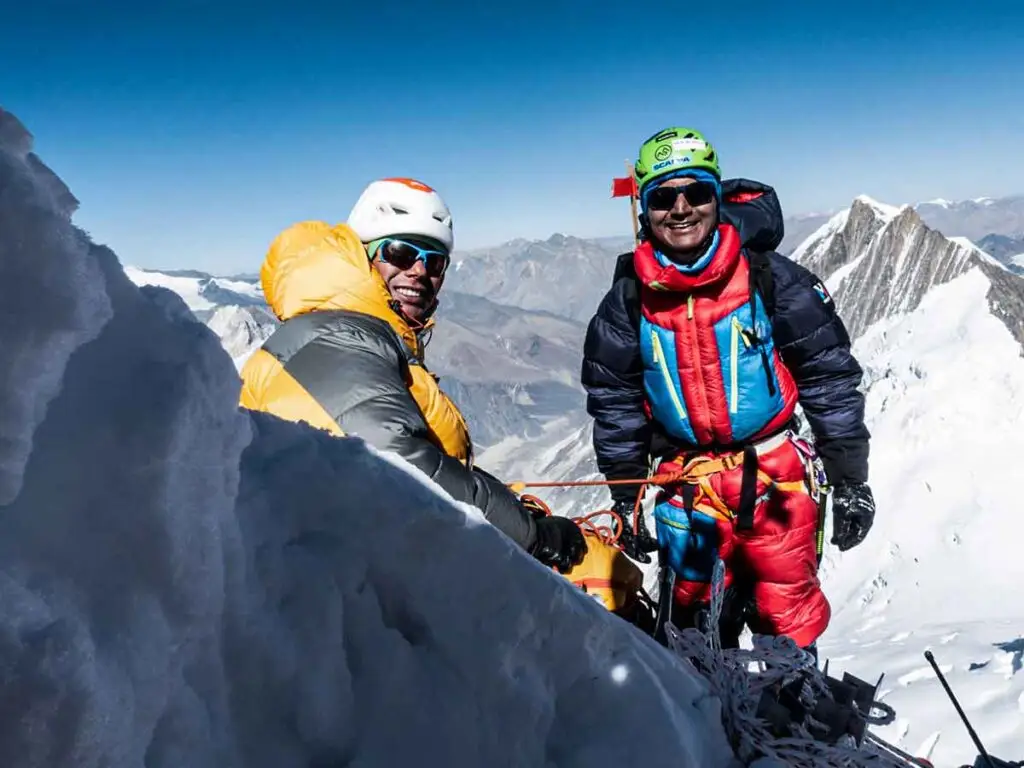
After relentless struggle, there we no signs of the weather improving and apart from that, our permit was coming to an end. If someone even makes the summit after the permit expires, it would not be counted as a winter ascent and that was pointless. We were physically weak, leaving us with no choice but to abort the expedition at 6400 meters.
No matter how well we plan and prepare, the mountain makes the final decision. A winter summit is one of the ultimate challenges of mountaineering. We couldn’t achieve the summit but learned things in other ways. We won in knowledge, experience and maturity. I am eternally thankful to Manaslu. We spent a total of something 2 weeks on the expedition.
Aftermath
Mountaineering is most of what I do. Trying new things, exploring new routes, attempting unexplored adventures have always been my key fascinations. This expedition was not successful. But deeper inside, we were learnt men when we returned. We understood the mountain a bit better, we understood the approach and timing better and overall, we had a better understanding of negotiating with an 8000er in winter.
I am still looking forward to make more winter climbs. I am looking forward to exploring new routes in the 6000 and 7000 meter mountains.
